If you are experiencing problems with your trees or shrubs on your property, then you might be wondering if they have a disease. Shrub and tree diseases, often resulting from certain fungi, can be aggressive and can quickly run rampant.
In fact, you might even be wondering if there’s a solution that’s worth investing in. The last thing that you want to do is throw your money at a problem that isn’t solvable.
You might want to know: Will a shrub or tree fungus treatment actually help?
The short answer to that is, “it depends.” But we know you’re looking for more information than that.
Since this is a question that we are commonly asked, we thought we’d round up some pro tips that will help set you up with realistic expectations.
Treating Shrub or Tree Fungus Starts with Identification
In order to know whether a tree or shrub can be successfully treated, the disease that you’re dealing with will have to be identified. The fact is, there are some diseases that may not be worth treating.
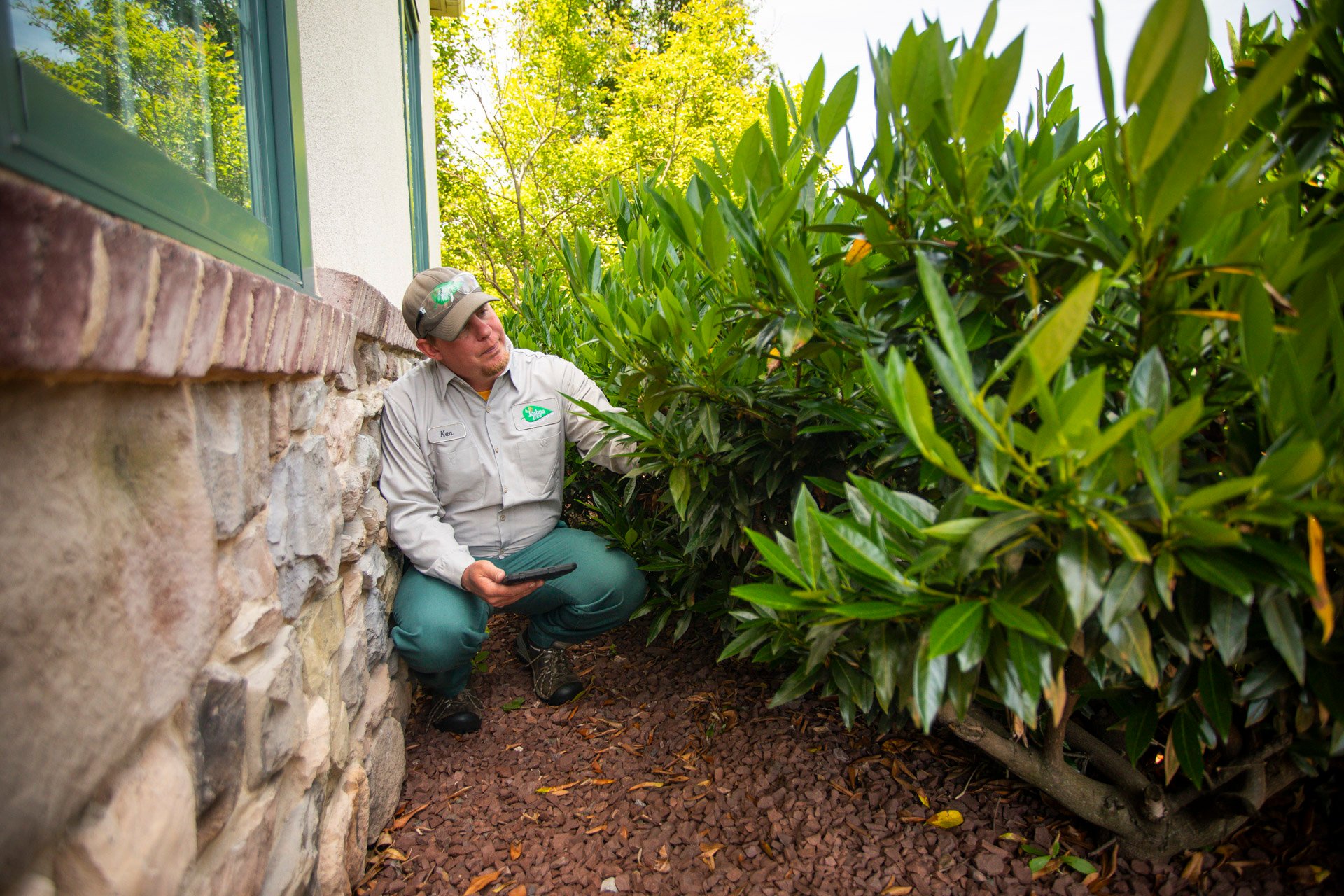
The severity of the disease also needs to be evaluated. Although a fungus might typically be treatable, if your tree or shrub is completely ravaged by this problem, it might be too far gone to fix.
Of course, sometimes the problem that you’re dealing with is not a disease at all. Oftentimes homeowners see certain symptoms that make them think they’re dealing with disease when in fact it’s something else entirely. It could be a pest or even an environmental stressor that is causing your shrub or tree problems.
The point is, proper identification of the problem is the first step. Once that occurs, the best course of action can be determined.
Some Common Shrub and Tree Diseases
There are so many different types of shrub and tree diseases, so it’s important that you have a professional make this identification. But just to give you a sense of what you might be dealing with, here are some that we commonly deal with, as well as their “treatability.”
Keep in mind that treatment often needs to occur during the early stage of the disease. If it doesn’t, the tree might become too sick to fix.
Verticillium Wilt
This fungal disease is common in deciduous trees. It is characterized in its early stages by heavy seed production, leaves that are smaller than normal, and browning of the margins of leaves. Oftentimes, the foliage on only one side of the tree will wilt. Typically, the wood under the bark of wilting branches will appear discolored in streaks, a telltale sign of verticillium wilt.
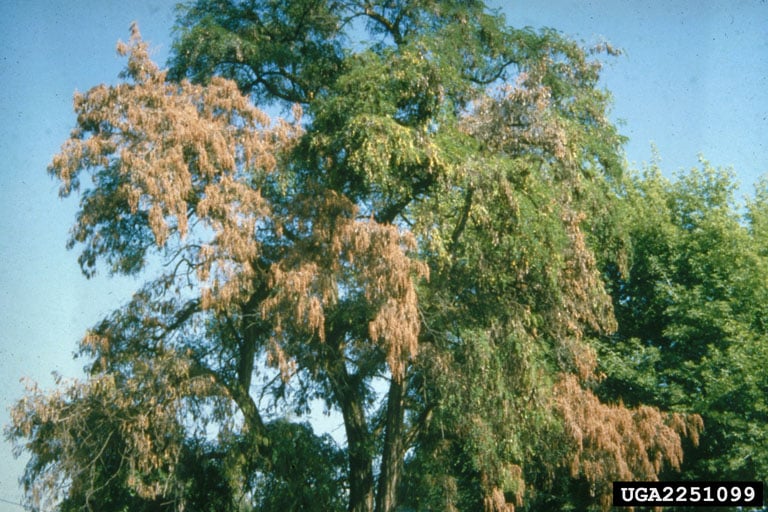
Verticillium Wilt is an example of a disease that can’t necessarily be treated, but if the tree is not too far gone, the disease can often be suppressed. That usually means the symptoms will slow down.
Bacterial Leaf Scorch
Bacterial leaf scorch (BLS) is a systemic disease caused by the bacterium Xylella fastidiosa. It is characterized by a premature browning of leaves.
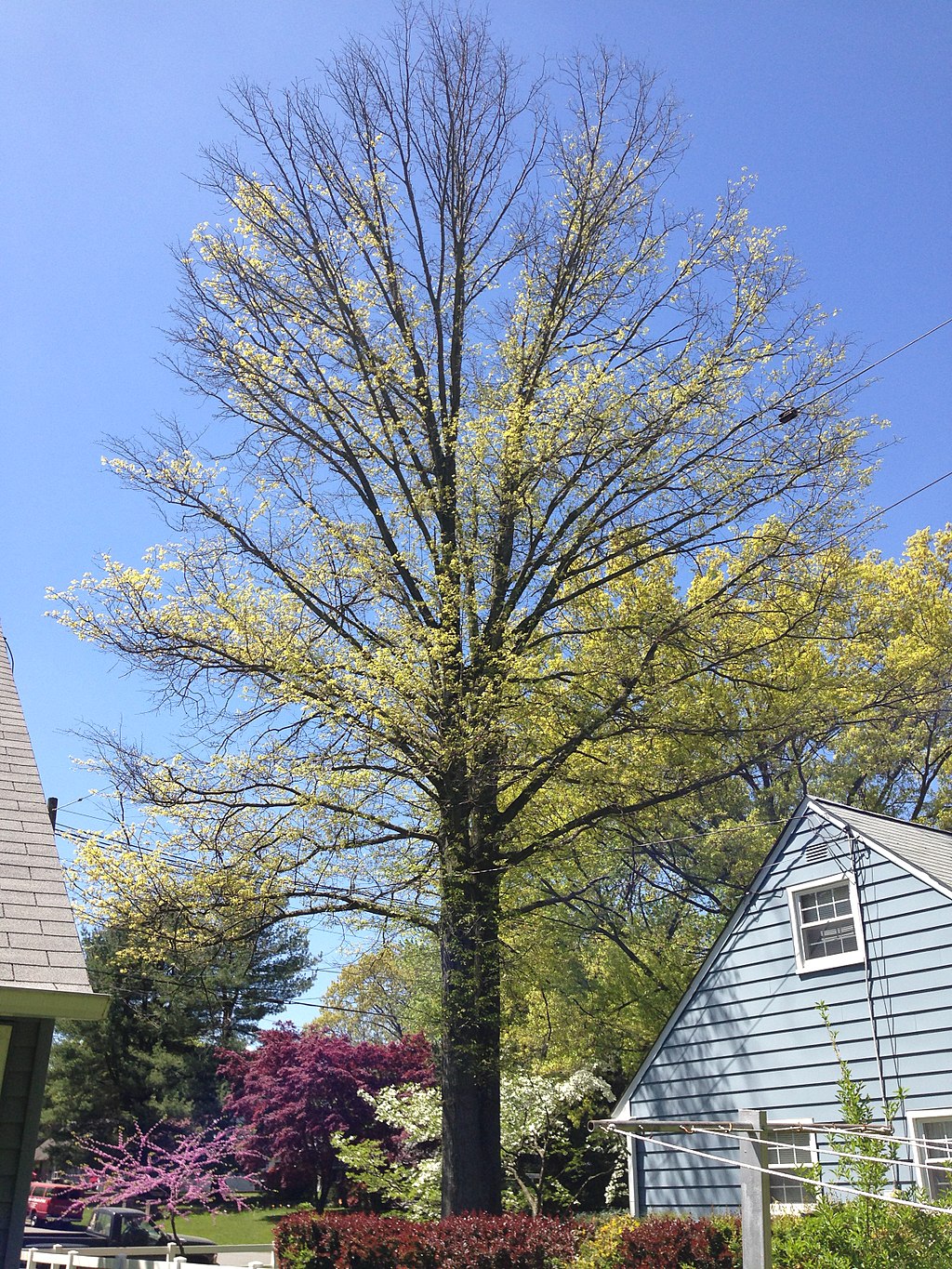
This is another example of a disease that cannot be cured, but it can be suppressed. With the right treatment, the symptoms can be slowed, giving you extra years with a tree or shrub that you might love.
Anthracnose
This group of related fungal leaf and stem diseases has been known to infect deciduous trees including Dogwood, Maple, Oak, Sycamore, Ash, and others. Symptoms include small dead spots on leaves, browning areas along leaf veins, premature defoliation, twig death, and dying buds in the early season, which can be misidentified as frost damage.
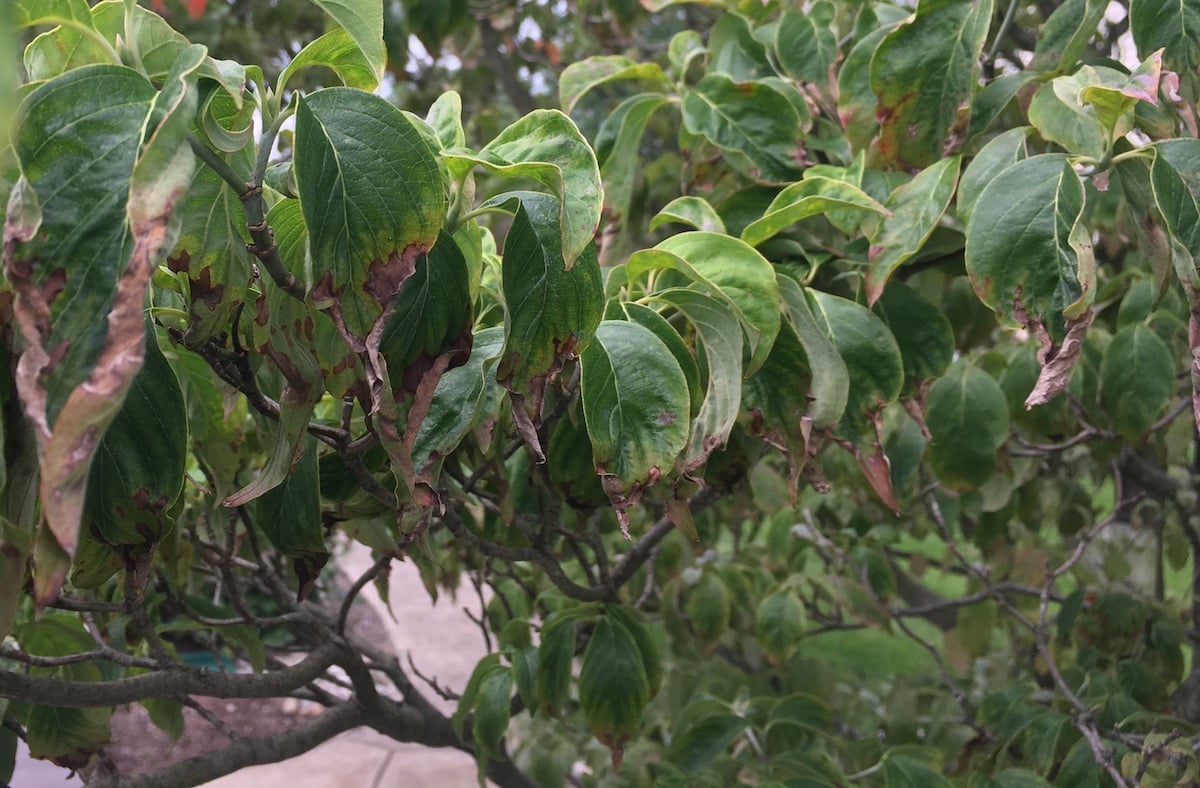
This is an example of a disease that can be successfully treated when caught early enough and properly diagnosed.
Cedar Apple Rust
Cedar apple rust is a fungal disease which may occur on apple and crabapple trees, though it can also spread to various junipers and red cedars. This disease causes pale yellow spots to form on leaves, which ultimately turn orange.
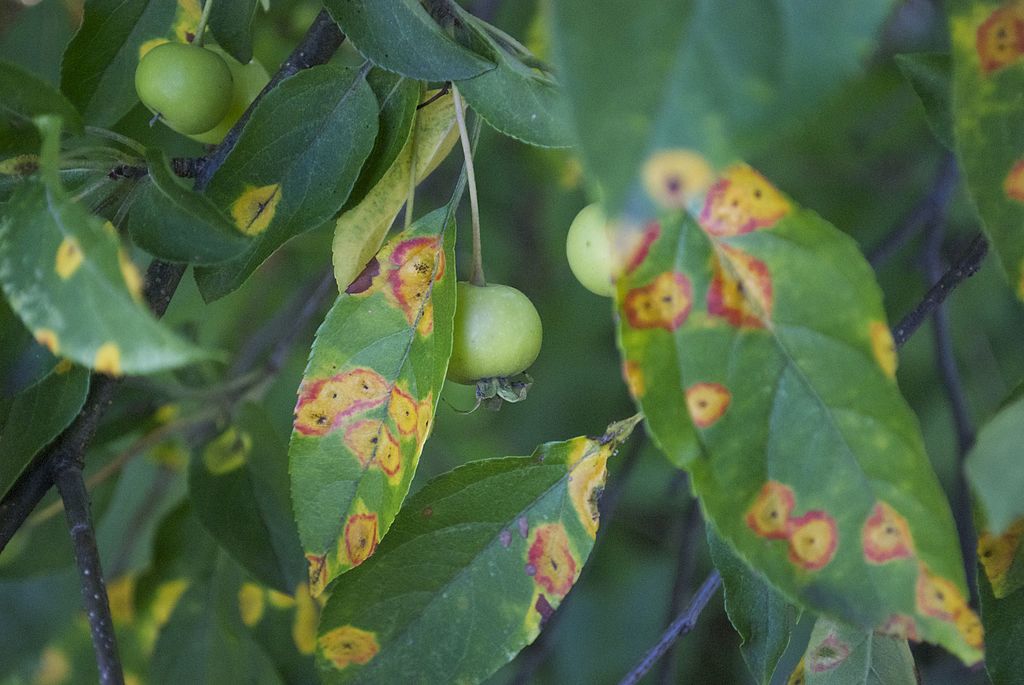
This is another disease that a shrub or tree fungus treatment can be successful with when properly identified and treated early.
Apple Scab
Apple scab is a fungus that attacks both wild and cultivated apple and crabapple trees. The first sign of an apple scab infection typically occurs on the leaves surrounding the flower buds.
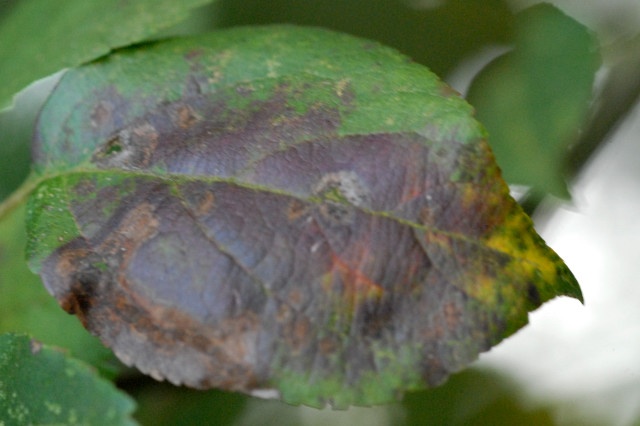
As it grows, the lesions become more pronounced, appearing as dull olive-green, yellow, or brown spots. When severe, leaves may become dwarfed or twisted and begin to fall off. The tree’s fruit may also become infected at any time of the disease’s development, also causing lesions and ultimately premature drop.
A shrub or tree fungus treatment can work well on Apple Scab when treated early.
Is it Worth Investing in Shrub or Tree Fungus Treatment?
Once it’s been established what type of disease you’re dealing with, your tree care professional should advise you on whether it’s worth investing in a treatment option.
Though it can be difficult for some homeowners to hear, sometimes a tree is too far gone to make investing in treatments worth it. This could be due to the fact that it’s an untreatable or difficult-to-treat disease, or simply because a potentially treatable disease has spread too much.
Sometimes, tree removal is your best option as it won’t make any sense to invest in a treatment plan that isn’t going to produce results.
While most homeowners wish their tree or shrub could be saved, they also appreciate a tree care professional that will be honest with them. This is important as not every tree service will be upfront about this information. In fact, they might even encourage you to get on a treatment plan, just so they can make money performing the work.
At Joshua Tree, you can always count on us to be completely upfront and honest with you. We believe in total transparency. That means that if we believe your tree can’t be saved, or that it’s going to steadily decline over time, we’ll tell you all that.
Of course, sometimes homeowners do have a tree or shrub that is meaningful to them and they’re willing to invest in a treatment if it means they can get a couple of years out of it. We’re obviously willing to work with those situations and customize a solution that is best for you. But we feel strongly that homeowners should have all of the information in front of them before making a choice. You have the opportunity to make an educated decision on what’s best for your property.
It’s also worth noting that a good plant health care program can also prevent a lot of these problems in the first place. A thorough evaluation by a pro should reveal what types of trees you have and what common problems they might experience. Or, perhaps you’ve had a tree that has experienced problems before. Your tree care professional should take this into account when customizing your plant health care program.
Your Smart Choice for Tree and Shrub Care
If you have trees or shrubs in your landscape that are struggling, the best starting point for a solution is to have one of our ISA Certified Arborists visit your property and diagnose specific problems. We are often able to catch many problems early before they become too serious.
We’ll also talk about disease prevention, going forward. We’re also able to develop customized plant health care programs that are specifically designed for the properties that we work with. Because of this, our customers end up with the best possible results.
If you’re interested in having a complimentary evaluation of the plants at your home or learning more about our Plant Health Care program, we are here to help.
Image Sources: verticillium wilt, bacterial leaf scorch, cedar apple rust, apple scab




